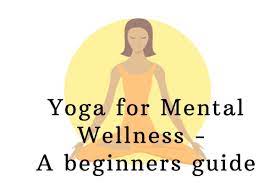Overview of Yoga and Its Benefits
Yoga, an ancient practice originating from India, has gained global popularity for its holistic approach to physical and mental well-being. It combines physical postures, breath control, and meditation to promote balance, flexibility, and inner peace.
Importance of Yoga for Beginners
For beginners, yoga offers a gentle and accessible entry point into the world of wellness. This guide aims to provide essential information and practical tips to help newcomers embark on their yoga journey, fostering a sense of relaxation, strength, and mindfulness.
Setting Realistic Goals
As a beginner, it’s crucial to set realistic and achievable goals. Whether it’s improving flexibility, relieving stress, or enhancing overall well-being, having clear intentions will guide your yoga practice.
Choosing the Right Yoga Style
Yoga comes in various styles, each offering unique benefits. For beginners, Hatha or Vinyasa yoga are often recommended as they focus on foundational poses and breath awareness. Exploring different styles can help you find the one that resonates with you.
Essential Yoga Equipment for Beginners
To get started, all you need is a comfortable yoga mat. As you progress, consider adding props like blocks and straps to assist in certain poses. Comfortable clothing that allows for movement is also essential for a positive yoga experience.
Mountain Pose (Tadasana)
A foundational pose that focuses on alignment and grounding, Mountain Pose is an excellent starting point for beginners to establish proper posture.
Downward-Facing Dog (Adho Mukha Svanasana)
This pose stretches the entire body, particularly the spine and hamstrings, while building strength in the arms and shoulders. It’s a staple in many yoga sequences.
Warrior I (Virabhadrasana I)
Warrior I strengthens the legs and core while promoting balance and stability. It’s a dynamic pose that encourages focus and concentration.
Tree Pose (Vrksasana)
Tree Pose is ideal for improving balance and concentration. It also engages the muscles of the legs and core, promoting stability and strength.
Child’s Pose (Balasana)
A restorative pose often used for relaxation, Child’s Pose helps release tension in the back, shoulders, and neck. It’s an excellent posture for beginners to return to during their practice.
Importance of Breath Awareness
Breath awareness is integral to yoga practice. Learning to synchronize breath with movement enhances focus, reduces stress, and promotes a sense of calmness.
Introduction to Pranayama
Pranayama, or breath control, is a key aspect of yoga. Simple pranayama techniques, such as diaphragmatic breathing or alternate nostril breathing, can be incorporated into your practice for added benefits.
Simple Breathing Exercises for Beginners
Start with basic breath awareness exercises, focusing on inhaling and exhaling deeply. As you progress, explore techniques like Ujjayi breath (victorious breath) to enhance your practice.
Setting a Regular Practice Schedule
Consistency is key in yoga. Establish a regular practice schedule that fits into your daily routine. Even short, frequent sessions can yield positive results over time.
Incorporating Yoga into Daily Life
Yoga goes beyond the mat. Integrating mindful breathing and simple stretches into your daily activities promotes flexibility and reduces tension.
Building Gradual Progress in Practice
Yoga is a journey, not a destination. Gradually increasing the intensity and duration of your practice allows your body to adapt, reducing the risk of injury. Listen to your body and progress at your own pace.
Mindfulness in Yoga Practice
Yoga encourages mindfulness—the practice of being present in the moment. Mindful movement and breath awareness during yoga contribute to stress reduction and improved mental clarity.
Yoga Poses for Stress Reduction
Certain poses, such as Child’s Pose, Corpse Pose (Shavasana), and seated forward bends, are particularly effective for relieving stress and promoting relaxation.
Meditation and Relaxation Techniques
Incorporating meditation into your yoga practice enhances mental well-being. Guided meditations or simply focusing on your breath can cultivate a calm and centered mind.
Conclusion
It’s essential to respect your body’s limitations. Avoid overexertion and pushing yourself too hard, especially as a beginner. Progress gradually to prevent injury.
